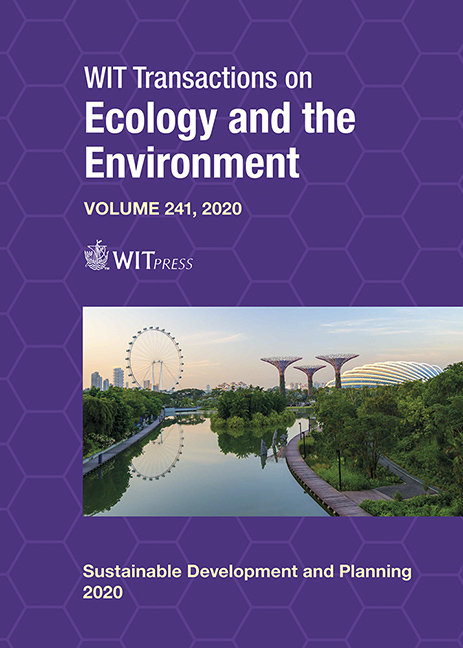CLASSIFICATION FRAMEWORK OF LOCAL CLIMATE ZONES USING WORLD URBAN DATABASE AND ACCESS PORTAL TOOLS: CASE STUDY OF ALEXANDRIA CITY, EGYPT
Price
Free (open access)
Transaction
Volume
241
Pages
14
Page Range
309 - 322
Published
2020
Paper DOI
10.2495/SDP200251
Copyright
WIT Press
Author(s)
SARAH M. ABOUGENDIA, HANY M. AYAD, ZEYAD T. EL-SAYAD
Abstract
The effect of rapid urbanization on the urban climate has been studied in different cities worldwide. Facing the intricate impacts of changes in urban climate on inhabitants’ wellbeing and environment, city planners are increasingly investigating climate determinants in their urban planning decisions. In Alexandria, Egypt, the urban morphology is characterized by high diversity that is expected to increase due to plans for future urban expansions. It is assumed that this diversity entails a variation in both physical and climatological characteristics of its urban canopy. In this context, climate-based classification of urban and rural areas, such as local climate zones could be used to support planning decisions. It assists in detecting the urban heat island and in documenting the urban surface properties, thus ensuring better decisions concerning the configuration of the built environment. This research adopts the method of the World Urban Database and Access Portal Tools, which employs a semi-automated classification of local climate zones. It combines pixel-based supervised classification of satellite imageries and local knowledge of the microscale built-up characteristics. While the method could be considered of average accuracy in terms of classification, training areas delineation and class interpretation, it gains specific importance due to its global implementation. This research presents a classification framework for the local climate zones based on incorporating several tools of extracting urban morphological characteristics. The study approach includes the following steps: (1) Identifying the morphological properties of the existing local climate zones types and subtypes using the available remotely sensed and geospatial data, (2) Classifying and digitizing the training areas of local climate zones classes from Google Earth satellite imageries, and (3) Automating the classification using the System for Automated Geoscientific Analysis. The introduced approach produces an enhanced local climate zones map that helps in identifying urban and natural features using their physical setting.
Keywords
local climate zones (LCZ), World Urban Database and Access Portal Tools (WUDAPT), geographic information systems (GIS)





